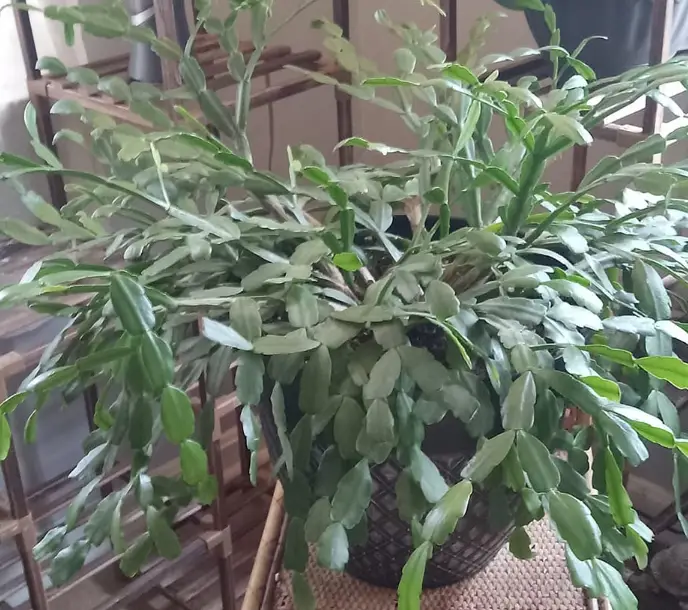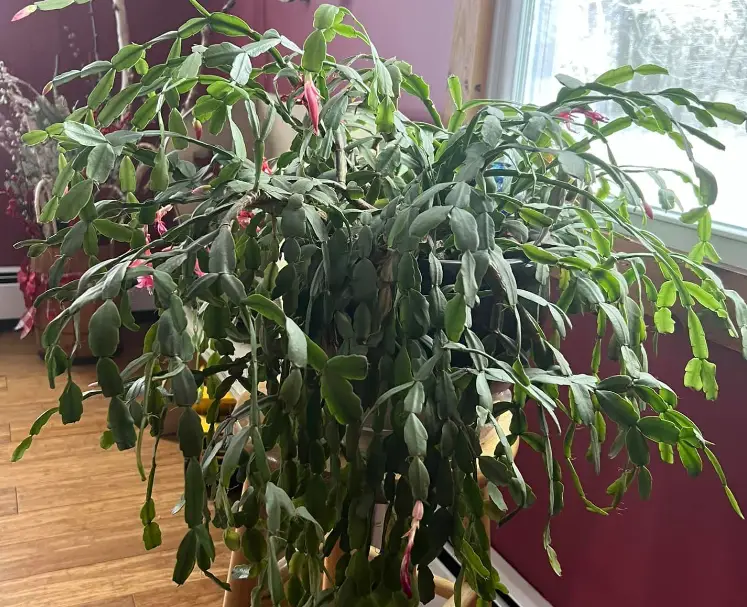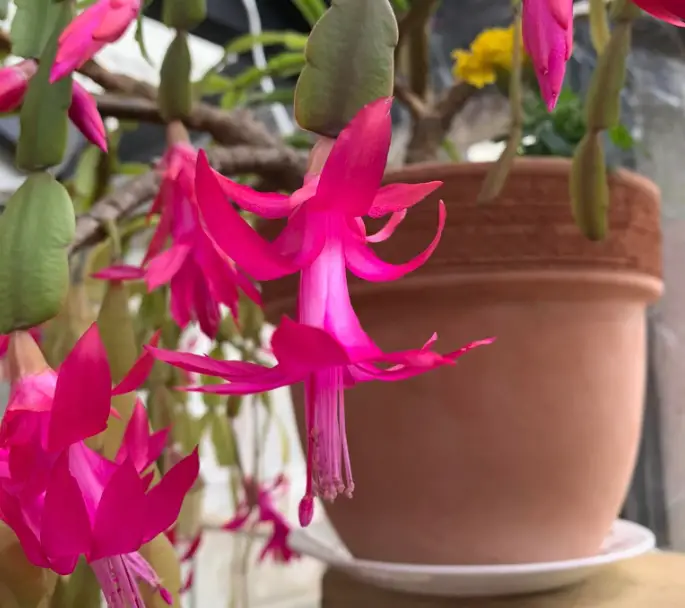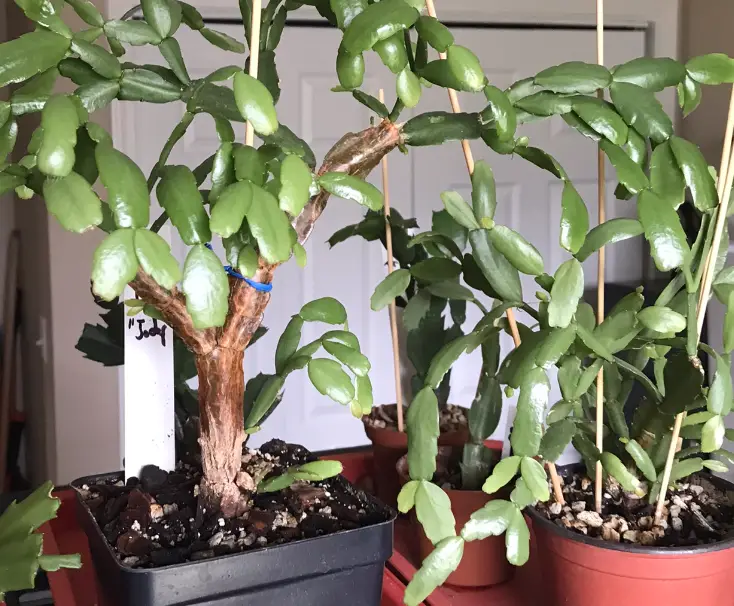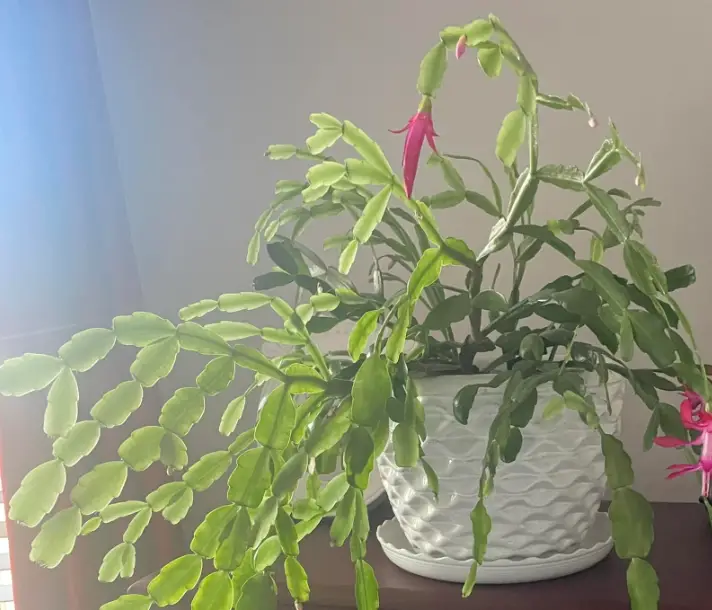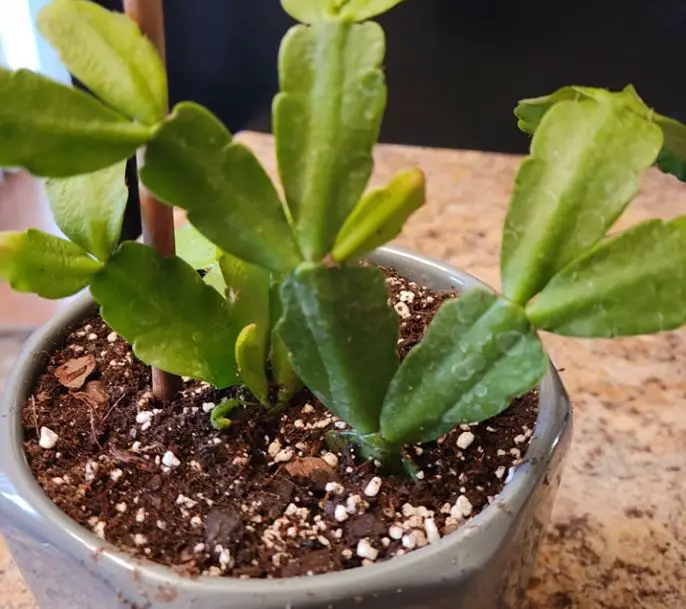Do You Water a Christmas Cactus From the Top or Bottom?
Watering a Christmas cactus is a delicate balance. These beautiful holiday plants don’t tolerate extreme drought but they are also susceptible to root rot if overwatered. This can be controlled by how you water your plant. So, do you water a Christmas cactus from the top or bottom?
The best way to water a Christmas cactus is from the bottom. Place the plant in a shallow dish or tray containing water and let it sit for 20 to 30 minutes. Remove the plant when water reaches the top and allow any excess water to drain out.
Christmas cactus also derives moisture from the air and it’s important to mist it when the air is very dry. You can use a spray bottle filled with room-temperature water, or place the plant on a pebble tray half-filled with water. This should be once a week, or twice if you live in a dry climate.
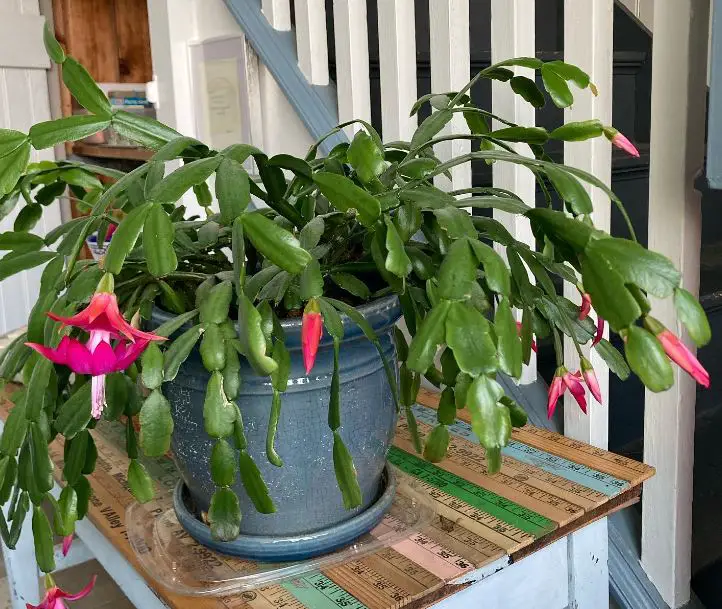
Watering a Christmas cactus the best way
Christmas cacti (Schlumbergera bridgesii) are native to the rainforests of Brazil, where they grow on rocks and tree branches. Their roots are shallow and they get moisture from the air and the rain. The decomposed plant materials which support their roots drain out faster than standard potting soil.
This is why Schlumbergeras prefer well-draining soil when grown indoors as a houseplant. Christmas cacti bloom around the winter and the beautiful bloom colors make them perfect holiday plants in many homes. They can also be offered as gifts to friends and families.
Flowering and the entire health of a Christmas cactus depend on how it’s cared for. Watering is an important maintenance practice but it can become a disgrace when done incorrectly. Christmas cactus is prone to root rot when overwatered and can also wilt when underwatered.
There are two options for watering a Christmas cactus. You can do it from the top or the bottom but the latter is seen as healthier and less riskier to the plant. Watering from the top can result in overwatered Christmas cactus, rot, and other fungal problems.
Advantages of bottom watering a Christmas cactus
There are several reasons why bottom watering a cactus is better than top watering.
- You are less likely to underwater your plants. When you top water a cactus, the water can easily run down the sides of the pot and out through the drainage holes, without actually reaching the roots.
- There are fewer chances of overwatering the plant. When bottom watering, it is easy to tell when the soil is saturated with water, unlike top watering where you keep watering until you see the excess water draining out the drainage holes.
- It ensures that the entire root system gets enough water. When you bottom water, the water slowly seeps up through the soil, and this provides ample time for the roots to absorb it. This is important for Christmas cacti, as they prefer soil to be kept moist regularly.
- Bottom watering is less likely to disrupt the stability of the plant or the soil. When top watering, the water can splash the soil and shake the plant, resulting in the cactus leaning on one side or falling over.
How to water a Christmas cactus (Bottom watering)
The best time to water a cactus is in the morning. This gives the roots enough time to absorb the water before nightfall. The warmth of the day will also help in drying out the soil faster. Damp soil conditions commonly promote fungi and bacteria that cause root rot.
Before watering your Christmas cactus, make sure the top inch of the soil is completely dry. You can check this by inserting your finger into the soil. Don’t water if the top layer of the soil is still moist. If you are sure that the cactus needs water then consider bottom watering it.
Here are the steps on how to bottom water your cactus:
- Fill a shallow dish or tray with clean water and place the cactus pot in it. Ensure the pot has drainage holes at the bottom.
- Let the plant sit in the water for about 20 to 30 minutes, and remove it when the soil is saturated. You can check by inserting your finger in the soil or by just watching if the top of the soil is wet.
- Remove the cactus from the water and place it on a drain pan to allow any excess water to drain out of the soil. Don’t let the plant sit in the water that collects on the pan because it will be reabsorbed back into the soil.
If bottom watering is not reaching the top, check if the pot drainage holes are working. Sometimes potting soil won’t absorb water if it’s too dry and compacted. In this case, you may need to repot the plant in a fresh soil mix.
One great concern about bottom watering is the accumulation of soluble salts in the growth media. These are mineral salts from fertilizers and hard water that become concentrated when water evaporates from the potting mix.
Accumulation of soluble salts can inhibit the plant’s uptake of nutrients and water. Symptoms may include, stunted growth, Christmas cactus drooping, dead root, and wilting. To prevent this problem, thoroughly water the plant from the top to leach the soil every four to six months.
Final Thoughts
How often to water your Christmas cactus will depend on the season of the year and the weather of the day. Cacti plants need more water during spring and summer and therefore more watering should be done during this growth period.
Christmas cactus should be watered less from the start of the fall until when flowers start to open. Cutting back on watering and placing the cactus in the dark helps in stimulating the formation of flower buds. Once flower buds start opening, the plant should also be taken back into a spot with bright indirect light.
Bottom watering is highly recommended for all succulents including the Christmas cactus. It greatly reduces the risk of fungal infections on the stems leaves and roots. While it takes more time, the plant gets ample time to utilize water as needed and you may end up using less water as compared to top watering.
References
Watering Indoor Plants – University of Maryland Extension
Holiday cacti – University of Minnesota Extension
Christmas cactus – Texas A&M University Extension
My name is Diane M Lewik, and I am the founder of this website. I am a degree holder in plant biology from the University of California – Berkeley. Over years, I have cultivated a vast collection of succulents and I have learned a great deal about how to grow and care for these unique plants.
